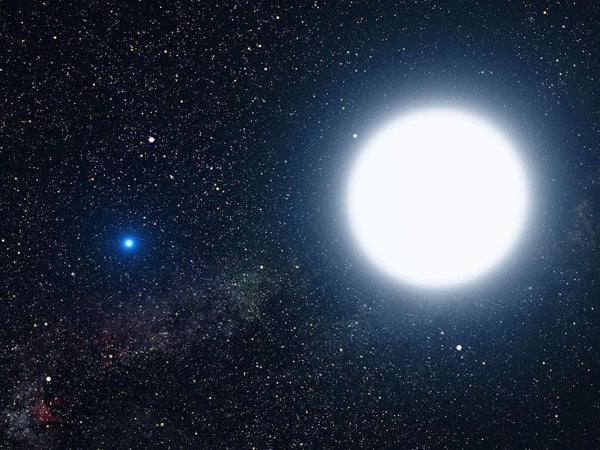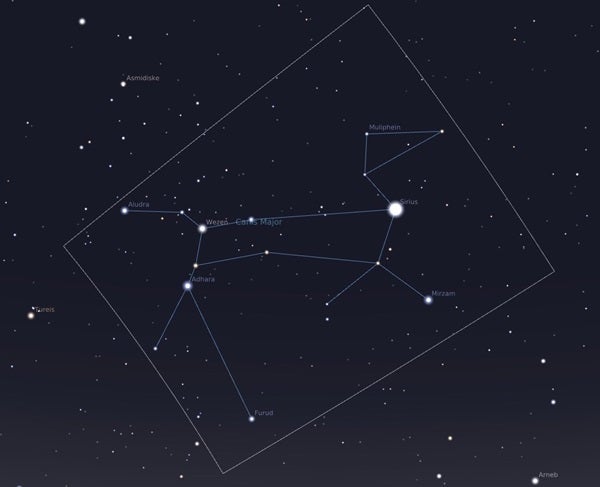The night sky’s brightest star (at magnitude –1.5) appears due south and at its highest position around 9 p.m. local time tonight. It then lies about one-third of the way from the horizon to the zenith from mid-northern latitudes. (The farther south you live, the higher it appears.)
For a few lucky observers this evening, however, Sirius should relinquish its crown as the brightest star when the 17th-magnitude asteroid 4388 Jurgenstock passes directly in front of it. During the occultation, Sirius will dim significantly — if not disappear — for 1.8 seconds.
The event can be seen along a narrow path that crosses southern Argentina, southern Chile, Panama, and the Caribbean. It occurs around 12:30 a.m. EST on the 19th. The precise track and time depend on the asteroid’s exact position. For the latest predictions, check out http://www.occultationpages.com/rasc/20190219_4388Jurgenstock.html.
What might you see from the center line? Astronomers estimate that Sirius spans 0.006″ and the asteroid 0.005″. If accurate, this means Sirius will dim significantly but not disappear. But slight errors in those measurements could result in Sirius vanishing. In either case, it’s an event you won’t want to miss.
For more quick and easy observing tips, check out The sky this week for February 15 to 24.











